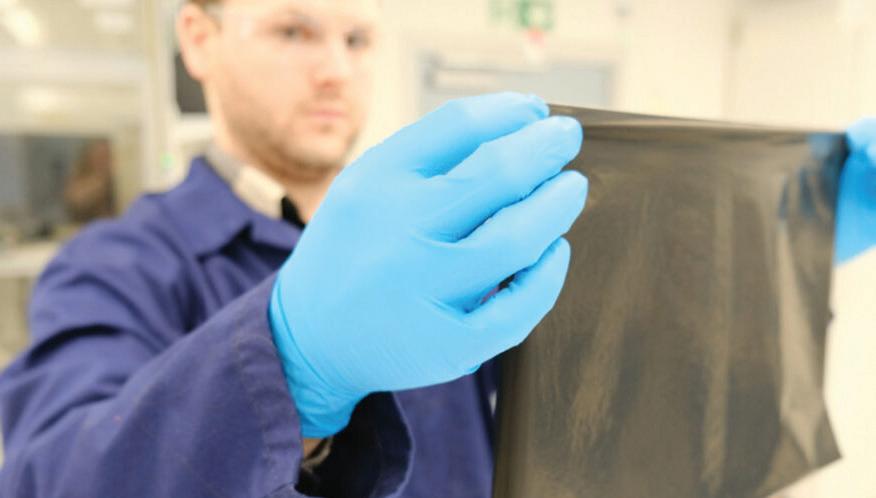
2 minute read
Membrane Technology Makes Fuel Cells Cheaper, Environmentally Friendly
A new membrane technology – so light and thin that it makes an A4 sheet of paper feel like thick cardboard – has been created in the hydrogen laboratory at Norwegian research institute SINTEF.
Fuel cells that run on hydrogen are efficient and emit water vapor instead of exhaust. But so far, the technology is still expensive and therefore not competitive with the electric motor alternative. Researchers have now figured out how they can accelerate competitiveness by reducing two critical components, potentially making fuel cells both cheaper and more environmentally friendly.
Fuel cells consist of a membrane and a catalyst. Both are crucial for the process of converting hydrogen gas into electrical energy and for the overall performance of fuel cells. The membranes are made of fluorinecontaining materials that are harmful to the environment, while the catalyst consists of platinum, which is a rare and expensive mineral. Membrane and catalysts account for over 40 percent of the total cost of fuel cells.
“It was thus important to find the optimal balance between the amount of materials used and the amount of electricity produced. In the research project, we found a way to arrange the reactors so that they provided enough power to run the fuel cell, while at the same time drastically reducing the amount of materials required,” said Patrick Fortin, a researcher at SINTEF.
He explains that the research has led to a 62.5 percent reduction in platinum content, compared to state-of-the-art fuel cells.
“By reducing the amount of platinum in the fuel cell, we’re not only helping to reduce costs, we’re also taking into account the global challenges regarding the supply of important raw materials and sustainability,” said Fortin.
Platinum is one of the most expensive and rarest minerals on earth, and it is only extracted in parts of the world outside Europe. The EU has therefore categorized platinum as a critical raw material. By slimming down the already razor-thin membrane by 33 percent, the researchers have now come up with a far more environmentally friendly membrane that is also less expensive, and cost can be reduced by up to 20 percent and PFAS can be reduced by a third. www.sintef.no
Levidian and Zentek Aim to Establish Graphene-Integrated Filter Manufacturing Facility
British climate tech company Levidian and Canadian graphene technology company Zentek have entered an agreement to explore the establishment of a new manufacturing facility in the Middle East.
The companies have agreed to combine their expertise in carbon capture, graphene production and materials development to accelerate the roll out of Zentek’s ZenGUARD™ Enhanced Air Filters and other graphene-enhanced products within the region, while also supporting the production of graphene for other industries.
Levidian’s patented LOOP system produces clean hydrogen and high-quality graphene by capturing carbon from methane before it’s burned, giving businesses the opportunity to both drive down emissions and boost the performance of their products. The graphene produced can be deployed in a wide range of products, from batteries and solar panels to tires and plastics. www.levidian.com










